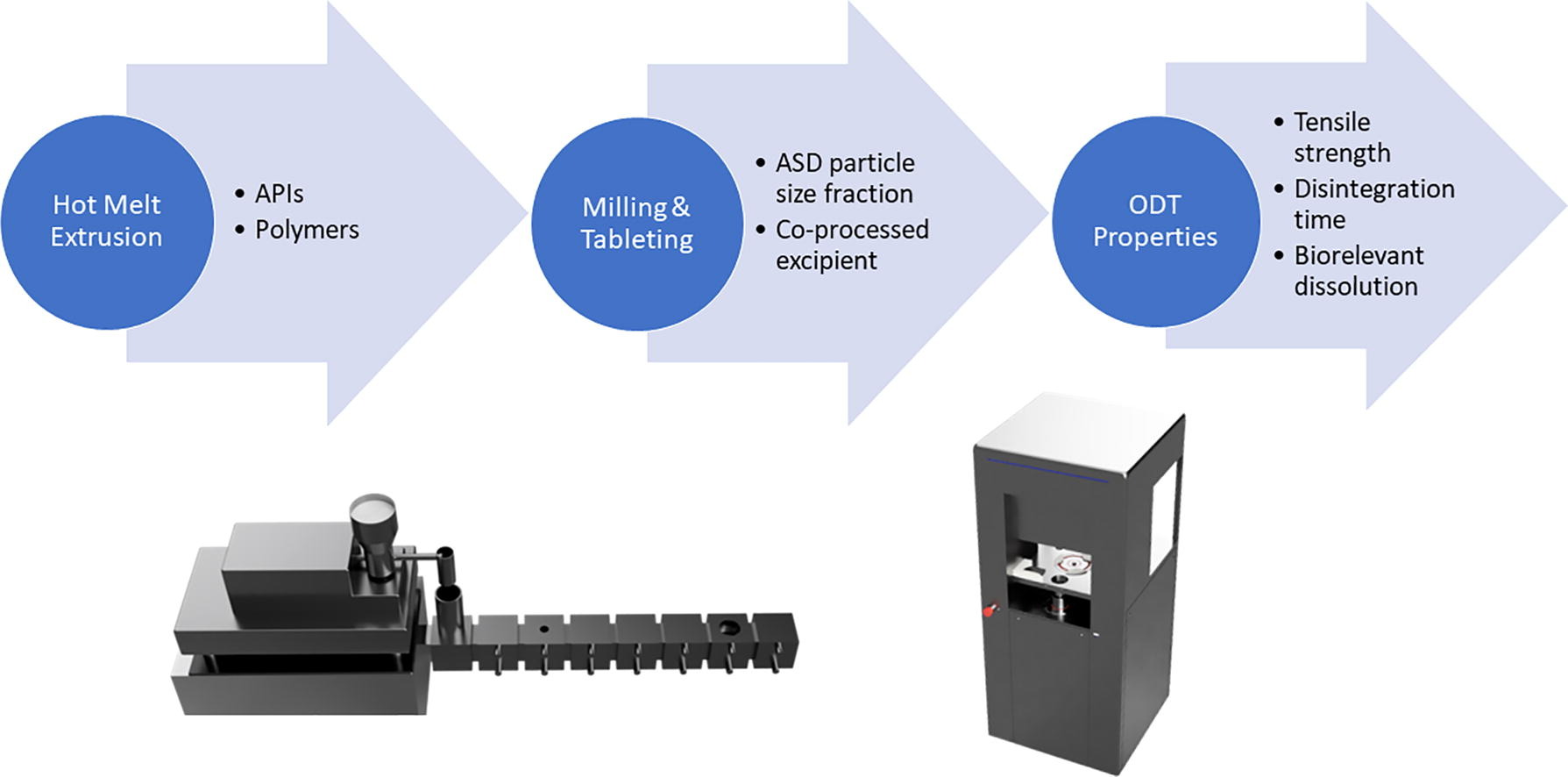Downstream Processing of Amorphous Solid Dispersions into Orodispersible Tablets

The formulation development of amorphous solid dispersions (ASDs) towards a patient-friendly oral solid dosage form is proving to be still challenging. To increase patient’s compliance orodispersible tablets (ODTs) can be seen as promising alternative. Two different ASDs were prepared via hot melt extrusion (HME), using PVPVA as polymer for ritonavir (RTV) and HPMCAS for lopinavir (LPV). The extrudates were milled, sieved, and blended with Hisorad® (HRD) or Ludiflash® (LF), two established co-processed excipients (CPE) prior to tableting. Interestingly, the selected ASD particle size was pointed out to be a key parameter for a fast disintegration and high mechanical strength.
Highlights
• Development of highly ASD loaded Orodispersible Tablets was feasible.
• ASD particle size was a key parameter for disintegration and mechanical strength.
• CPEs performance strongly depended on ASD matrix polymer.
• Tableting process did not alter the dissolution performance.
In terms of PVPVA based ASDs, larger particle sizes > 500 µm enabled a rapid disintegration even under 30 s for 50 % ASD loaded ODTs, whereas the use of smaller particles went along with significant higher disintegration times. However, the influence of the CPE was immense for PVPVA based ASDs, since it was only possible to prepare well performing ODTs, when Hisorad® was chosen. In contrast for HPMCAS based ASDs the selection of smaller particle sizes 180-500 µm was beneficial for overcoming the poor compressibility of the ASD matrix polymer. ODTs with LPV could be produced using both CPEs even with higher ASD loads up to 75 %, while still showing remarkably fast disintegration.
Read more
Marcel Kokott, Stefan Klinken, Jörg Breitkreutz, Raphael Wiedey, Downstream Processing of Amorphous Solid Dispersions into Orodispersible Tablets, International Journal of Pharmaceutics, 2022, 122493, ISSN 0378-5173, https://doi.org/10.1016/j.ijpharm.2022.122493.

